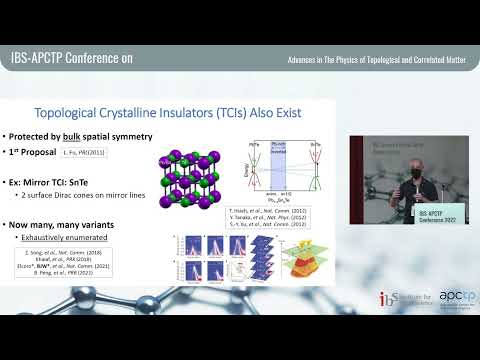Description:
Explore the intricacies of higher-order topological crystalline insulators (HOTIs) in this comprehensive lecture. Delve into the bulk signatures of helical TCIs and their relationship to sample-independent experimental observables. Discover the three distinct spin-resolved phases of helical HOTIs: 3D quantum spin Hall insulators, "spin-Weyl" semimetal states, and T-doubled axion insulator (T-DAXI) states. Examine the quantitatively robust responses of these phases to large deformations of the bulk spin-orbital texture. Investigate experimental signatures for each spin-stable regime, including surface Fermi arcs in spin-Weyl semimetals under strong Zeeman fields and half-quantized 2D TI states on gapped surfaces of T-DAXIs. Learn about flux insertion, position-space partial Chern markers, and newly introduced nested spin-resolved Wilson loops and spin-resolved layer constructions used to fully characterize the bulk topological properties of inversion- and T-protected helical HOTIs.

Spin-Resolved Topology and Partial Axion Angles in Higher-Order Topological Crystalline Insulators
Add to list